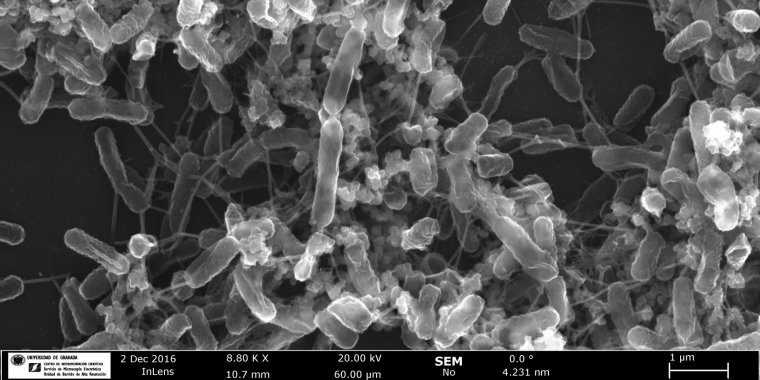| News / Science News |
Researchers discover the oceanic precipitation mechanism for barium, which is a proxy for marine bacterial productivity
Barite, a mineral compound of barium, is now a direct and accurate proxy for marine productivity, marine climate, and marine life evolution in general. However, the biogeochemical cycle of barium, which is closely related to the carbon cycle, is not well constrained, being a mystery how barium precipitates in ocean waters.

Biofilm produced by one of the bacterial strains used in this experimental work. Image credit: HRSEM at the Center for Scientific Instrumentation.
Now, a study carried out by researchers from the University of Granada (UGR) and the Spanish National Research Council (CSIC) has proven that bacteria may play a crucial role in barite precipitation.
“Experiments carried out with diverse marine bacteria shed light on the processes by which barite precipitates in bacterial biofilms from the bioaccumulation of barium in bacterial cells and extracellular polymeric substances (EPS)”, Francisca Martínez Ruiz and María Teresa González Muñoz, researcher from the Andalusian Earth Sciences Institute (IACT) and professor emeritus of the Department of Microbiology at the UGR, respectively, explain.
“The results of this experimental study support the hypothesis that during periods of high productivity, large amounts of organic matter subjected to bacterial degradation along with the production of extracellular polymeric substances lead to barium accumulation”, they add.
At the initial stages of barium bioaccumulation this element binds to phosphate groups present in EPS, thus forming an amorphous precursor which later evolves to barium sulfate (barite crystals) after replacing phosphate groups with sulfate groups.
The study of barite from water columns in areas of high productivity also proves the existence of a P‑rich amorphous precursor.
“This finding therefore opens a novel field of the greatest interest, about microbial precipitation in seawater and the role of extracellular polymeric substances in mineral precipitation and the absorption of diverse metals. This would play a crucial role in a large number of biogeochemical cycles”, the researchers conclude. (University of Granada)
YOU MAY ALSO LIKE




